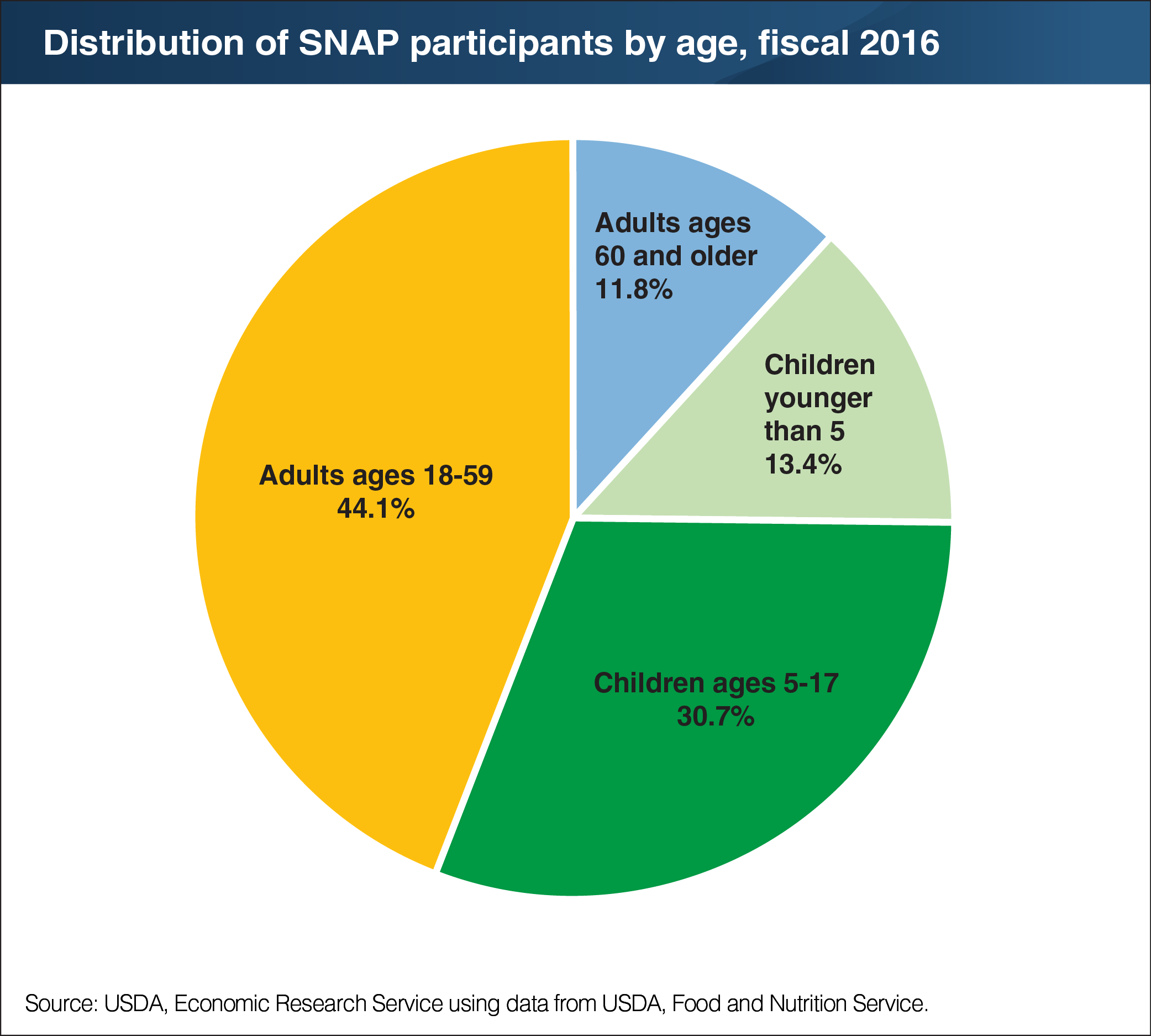Working-age adults comprise 44 percent of SNAP participants
- by Laura Tiehen
- 2/20/2018

In an average month in fiscal 2017, USDA's Supplemental Nutrition Assistance Program (SNAP) provided 42.1 million low-income Americans with benefits to purchase food at authorized food stores. The number of people receiving SNAP benefits has declined by 11.5 percent since the historical high of an average 47.6 million per month in fiscal 2013. In the 2016 fiscal year (the latest year for which demographic data are available), adults age 18-59 accounted for 44.1 percent of participants, children younger than age 5 accounted for 13.4 percent of participants, school-age children accounted for 30.7 percent of participants, and the elderly accounted for 11.8 percent of participants. The composition of SNAP participants, as well as the overall SNAP caseload, can be affected by both changing economic conditions and modifications to program requirements. The composition shifted after the 2007-09 recession, as more working-age adults became eligible for the program and applied for benefits. Working-age adults' share of the SNAP caseload increased from 42.1 percent in 2006 to 46.4 percent in 2013, and has declined each year since 2013. This chart is from ERS's data product, Ag and Food Statistics: Charting the Essentials.

